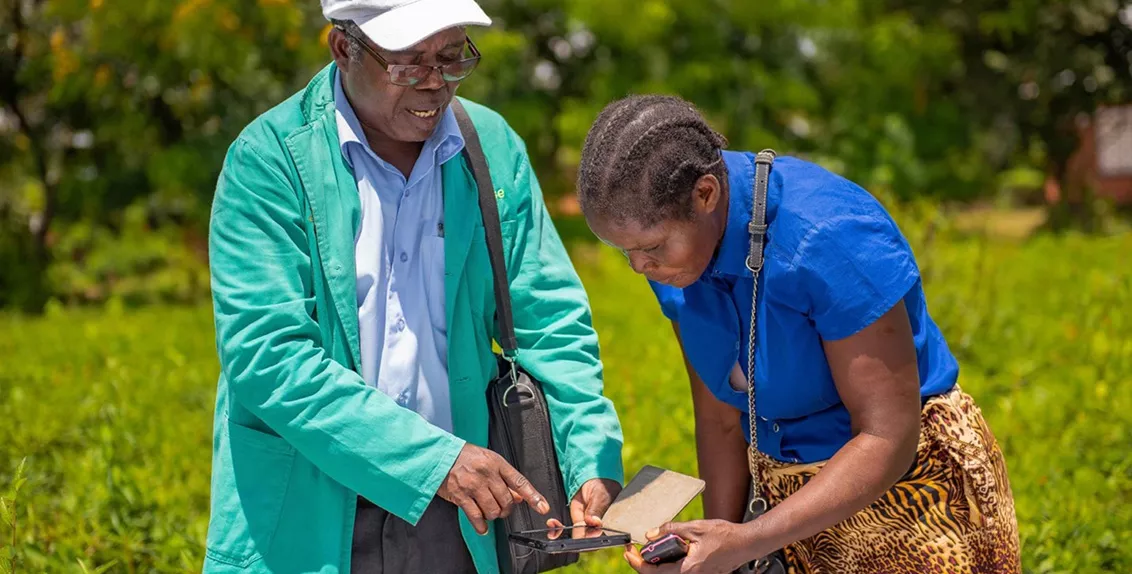Data and farming innovations aiding crop pest risk prediction and management in low-income countries
20 June 2021
Novel solutions in the form of pest risk alert systems now present a unique opportunity for low-income countries to better predict, prevent and manage pests that are estimated to cause between 20%-40% crop losses annually, threatening the food security of millions. This has been highlighted in a United Nations Food Systems Summit (UNFSS) 2021 brief prepared by scientists working for member organizations of AIRCA.
In the brief titled “Leveraging data, models and farming innovation to prevent, prepare for and manage pest incursions: Delivering a pest risk service for low-income countries,” scientists outline how increasing data availability, management and modelling, plus recent advances in technology can support the development of plant health early warning and risk mapping systems in low-income countries. This can potentially improve food systems and contribute towards the realization of the UN Sustainable Development Goal 2 “End hunger, achieve food security and improve nutrition”.
Data and pest risk prediction
Many low-income countries, economies and people globally rely on agriculture as the mainstay but many risks such as crop pests, climate change, weak phytosanitary systems, insufficient financial, human and infrastructure capacity, among many others, impede crop production.
For example, crop losses from pests and diseases are predicted to further worsen due to climate change with a projected 10-25% yield loss for major grain crops per degree of global mean surface warming.
Notably, significant progress has been made by numerous initiatives that continue to empower plant health system stakeholders, including farmers with solutions aimed at mitigating such risks. However, solutions in the form of pest risk alert systems remain rare. According to the brief, pest risk alert systems have mostly been developed in high-income countries and applied in low-income countries for a few transboundary pests or those pests that threaten high-value crops for export markets.
Evidence now suggests that a combination of the latest advances in data availability, management and use, availability of cutting-edge technology, plus innovative extension approaches, now present a real opportunity for low-income countries to prevent, prepare for and manage pest incursions via pest risk services. These systems provide alerts about near-future potential geographical hotspots of transboundary pests or build-up of local pests that can be used for warning of potential pest outbreaks and appropriate targeted interventions.
Surveillance and early warning systems in action
The desert locust is one of the most destructive transboundary pests affecting Africa and parts of Asia. Between 2019 and 2020, favourable conditions enabled rapid reproduction and migration of the pest over large geographies that consequently impacted food production.
Systems such as the Desert Locust Information Services (DLIS) are being used to alert authorities of favourable conditions for desert locust swarm formation, enabling timely intervention. PRISE (Pest Risk Information Service) uses state-of-the-art technology to inform farmers in sub-Saharan Africa of pest outbreaks that could devastate their crops and livelihoods. Combining satellite data, field observations, and crowdsourced data from subscribers, PRISE models pest populations on key crops and automatically generates risk messages and mitigation measures that are communicated to users as alerts.
Other schemes are also able to use state-of-the-art technologies to collect data on pest presence, monitor pest movements, model and project potential crop losses. These insights are essential for authorities and decision-makers to predict, prevent and swiftly manage pests.
In addition to early warning and monitoring of pest populations and movements, data and technologies are being utilized to monitor current and future potential pest habitats using newly launched earth observation tools.
Long-term earth observation data can also model and predict future scenarios. By using cutting-edge machine learning and artificial intelligence, patterns in past and current pest occurrences can be used to predict future occurrence months in advance, enabling deployment of targeted and effective interventions.
Way forward
Effective pest risk alert systems should be able to communicate risks and mitigation strategies to those who need the information the most so that potential crop losses are reduced and timely sustainable interventions are made. For this to happen, scientists recommend that several aspects should be considered in the near future for low-income countries.
Data should be published openly using the FAIR principles. This means that whenever possible, data should be findable, accessible, interoperable and reusable. Sharing openly accessible data through common web platforms and institutional repositories will help bridge the data gap in regional and local surveillance and improve linkage of data systems and sharing of pest data.
Platforms and portals with reports and datasets that are mostly accessed and used by national and regional decision-makers should be cascaded down to the farmer level, ensuring the information is actionable and within farmers’ technological capabilities. As such, farmers should be involved in the development and rollout of new services, including taking up roles with reasonable digital literacy needs.
For greater impact, concerted efforts should go towards transforming larger data sets into actionable knowledge. Actionable insights such as trends in pest movement can be used in real time, allowing for a timely response by key plant health system stakeholders. Previously hidden patterns of historical pest and weed occurrence, for example, can be used to predict future attacks and targeted sustainable interventions such as the use of biopesticides.
Private-public partnerships will also play a key role in ensuring that the pest risk alert systems remain sustainable in the long term. Such partnerships should enable the developed western countries that often have the technological infrastructure and capabilities to share their systems and capabilities with the low-income countries.
Future pest prediction systems will also require multidisciplinary involvement and strengthening of linkages by key stakeholders in respective plant health systems. This will provide a strong foundation for the introduction and scale-up of innovative pest risk alert systems at local, national and regional.











